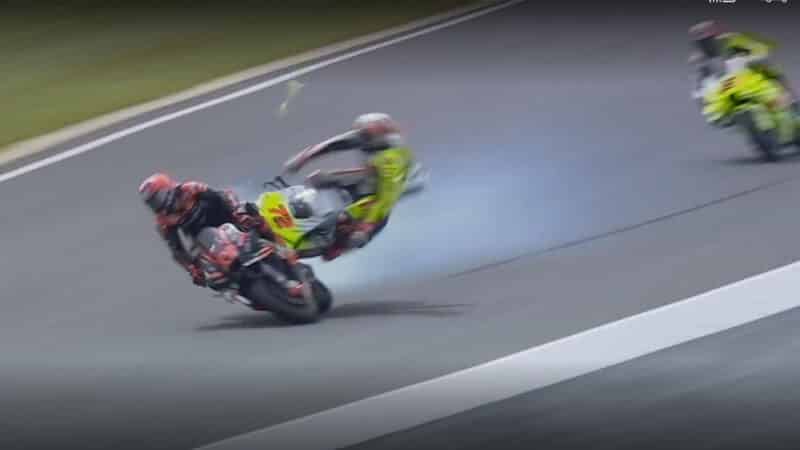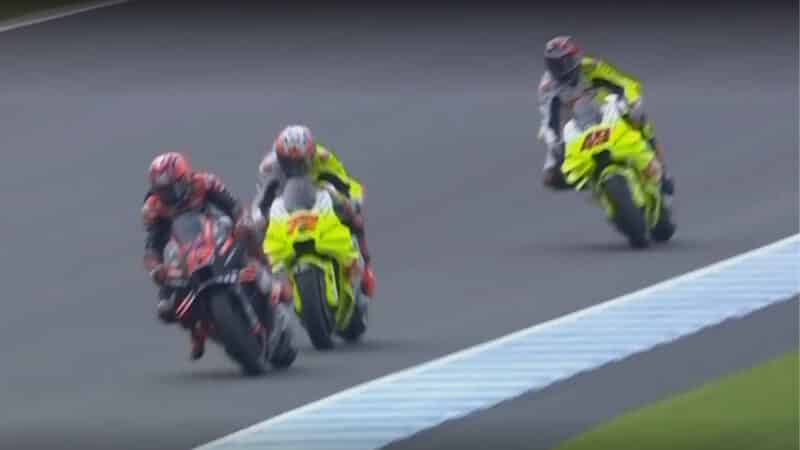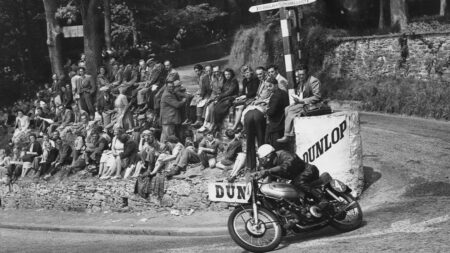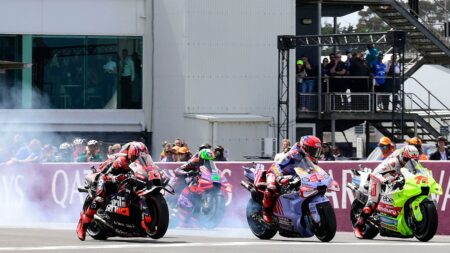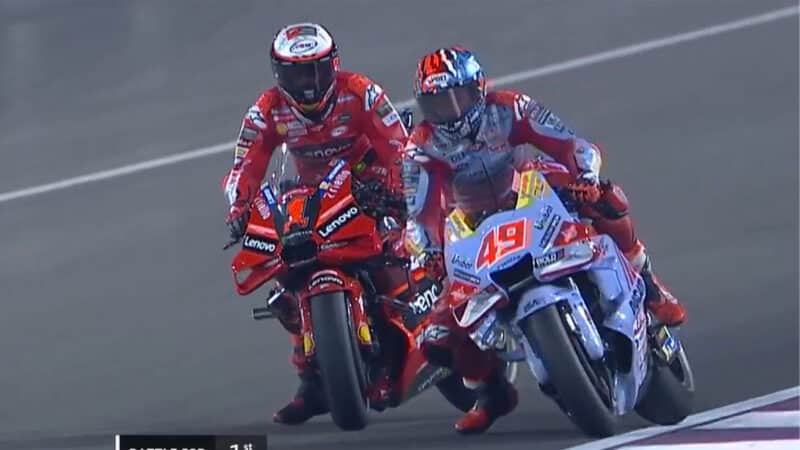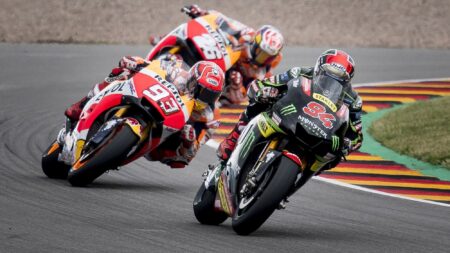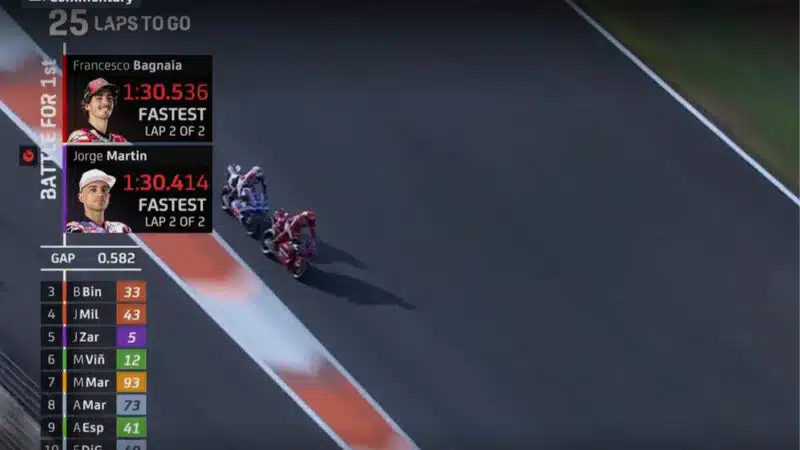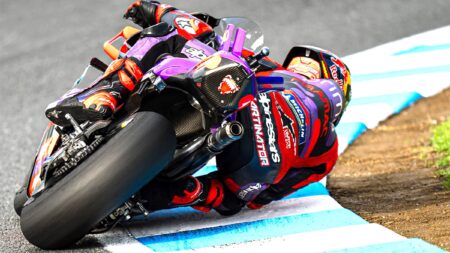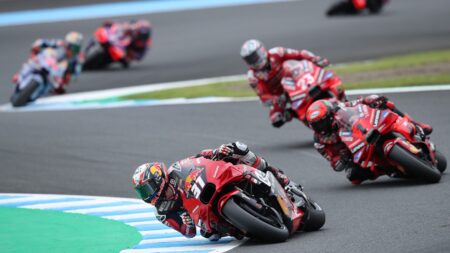How significant is the air-stop issue? At that speed it’s huge. Air-stop is the reverse of slipstreaming, when riders use the low-pressure bubble from the machine ahead to increase their acceleration. When you’re on the throttle and you find your way into that bubble the reduction in air resistance is startling. It feels like you’ve pressed a turbo button – your engine increases revs dramatically and you charge past the machine ahead so rapidly that sometimes you nearly clip its rear end.
In other words, the Phillip Island incident was a perfect storm: air-stop and sidewinds. Bezzecchi wasn’t stopping and when he took an extra handful of brake the front tyre locked because it had less downforce – and therefore less grip – and he cannoned into the Aprilia, both bikes and riders tumbling off the track and into the gravel trap.
Nonetheless, Bezzecchi was hit with a long-lap penalty in the grand prix, for “riding in an irresponsible manner causing a crash”.
Bezzecchi wasn’t riding irresponsibly. Neither was Viñales, although the stewards could also have hit him with a penalty for breaking the unwritten agreement between riders that you shouldn’t make a pass and cut in front when braking from high speeds, due to the air-stop issue.
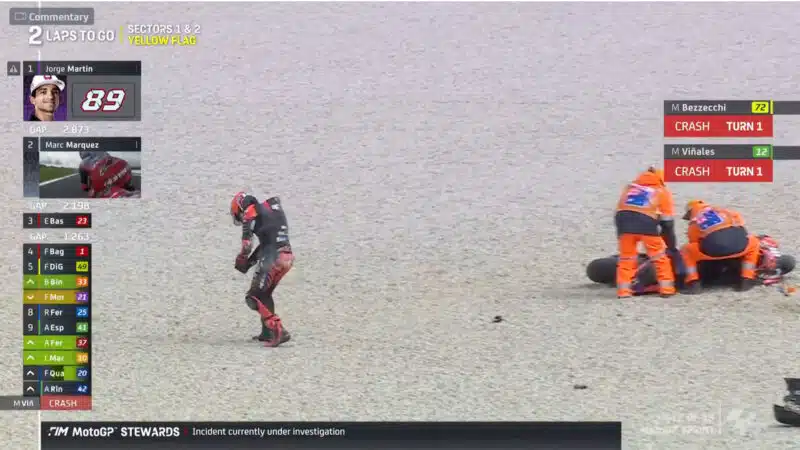
Viñales staggers away from the Turn 1 gravel trap – modern riding gear is so effective that both riders raced the next day
Dornas/MotoGP
“You should always leave some clean air to the guy behind,” said Pol Espargaró last year. “Because when you pull in front of the other guy, the speed increases quite fast for the other guy, so he can hit you from behind.”
In reality, Bezzecchi and Viñales were victims of circumstances largely beyond their control. Both riders may not have been 100% perfect in their riding but that’s a lesser factor than the air-stop and sidewinds.
Current MotoGP bikes – with their numerous downforce-generating aerodynamic appendages – create a huge wake at high speeds, much bigger than pre-downforce machines. This is caused by the airflow separating around the motorcycle and breaking up into turbulence and whirling, buffeting vortices that create a low-pressure bubble behind the motorcycle, the so-called dirty air that riders hate so much.

